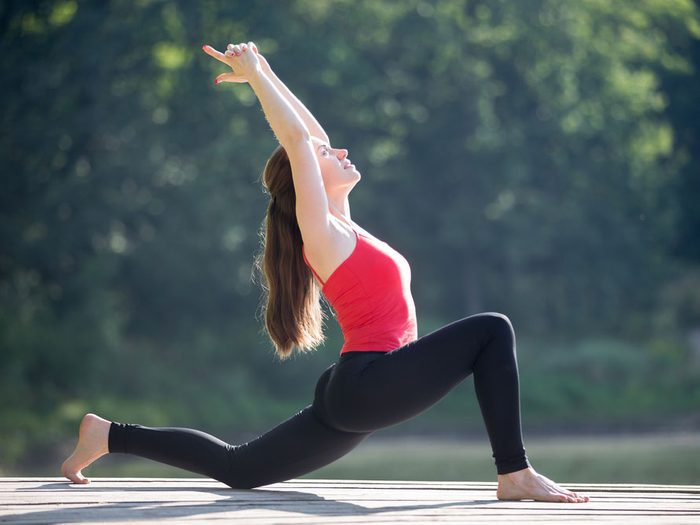
The benefits of yoga for sciatic pain
When the sciatic nerve gets irritated, it can cause pain, tingling and discomfort “that radiates from the lower back to the back of the hips, thighs and legs,” says Aliya Visram, a chiropractor, acupuncturist and yoga instructor at Toronto Yoga Mamas.
The good news? Yoga has numerous health benefits, with pain relief being at the top of the list. “There are some gentle yoga poses that can help strengthen and stretch the muscles around your lower back, hips and pelvis,” says Visram.
Roll out your mat, strike a pose and finally find some relief. Here are six yoga-inspired sciatica stretches to help.
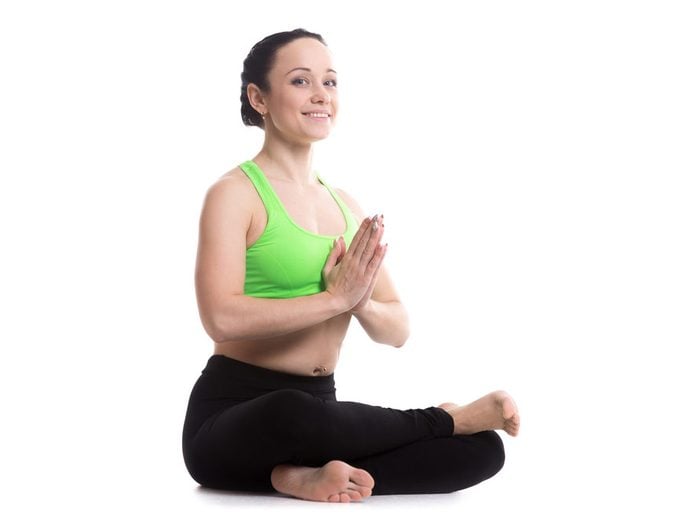
Fire Log Pose
If you’re looking for a deep hip stretch that also eases sciatic pain, fire log pose is your friend.
“If the piriformis muscle (a deep hip muscle) is tight, it exerts pressure on the sciatic nerve causing sharp, radiating pain,” says Visram.
That’s where fire log pose come in. It’s a sciatica stretch that helps to release the piriformis muscle, offering some much-needed relief for tight hips and sciatic pain.
To make the pose more effective, make sure your form is correct.
“The trick is to fold forward from your hips rather than round forward from your belly,” says Visram.
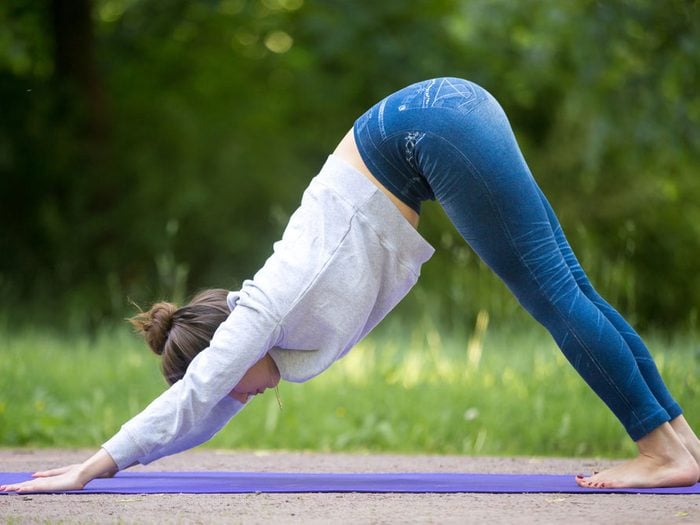
Downward Dog
Perhaps yogis’ favourite pose, downward dog is a full-body stretch that provides relief for tight hamstrings.
“A tight hamstring combined with an unhappy piriformis muscle can irritate and aggravate the sciatic nerve,” says Visram.
That’s where downward dog comes in. “Downward facing dog is an excellent hamstring stretch and also helps to align the entire spine with lengthening and strengthening the lower back,” says Sarah Bolen, a Halifax-based yoga instructor and host of Coral TV’s Surviving Yoga.
She recommends slightly bending your knees in this pose if you experience sciatic pain, to assist in tilting the pelvis forward.
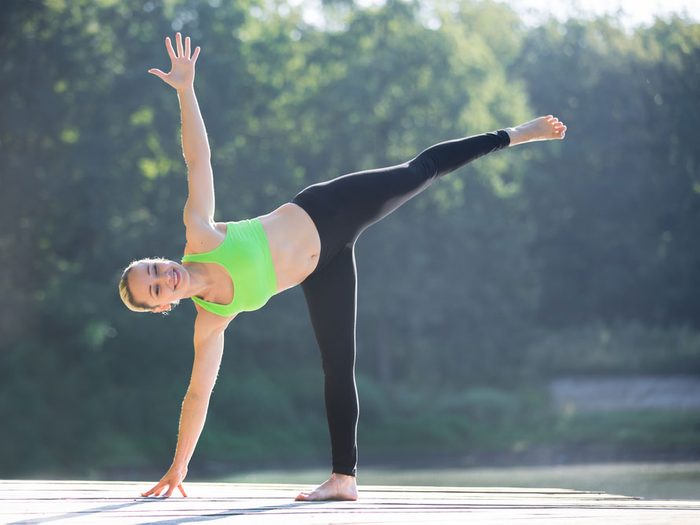
Half Moon
If you want quick relief from sciatica, get into this pose and breathe a sigh of relief.
“The twisting position of half moon pose makes it a win for sciatic pain sufferers,” says Visram. “The twisting motion helps to open up and create space between the vertebrae, thereby decompressing the spine.”
Not only will you feel less pressure on your sciatic nerve while you’re in this pose, you’ll also strengthen the muscles surrounding it.
“The balance needed to complete this pose helps to engage and strengthen the lower back and core muscles,” says Visram.
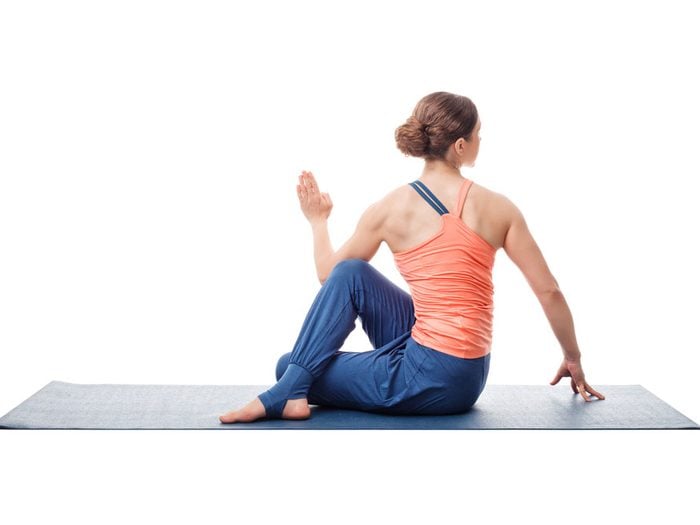
Seated Spinal Twist
This simple, but effective, pose is a go-to for relief of sciatic pain, especially for those new to yoga.
“A simple spinal twist gives the piriformis muscle a mild, gentle stretch guiding it to release and lengthen,” says Visram.
Just don’t force your body into this pose.
“It is important to start slowly and intensify the depth of the twist gradually to avoid discomfort and pain,” says Visram.
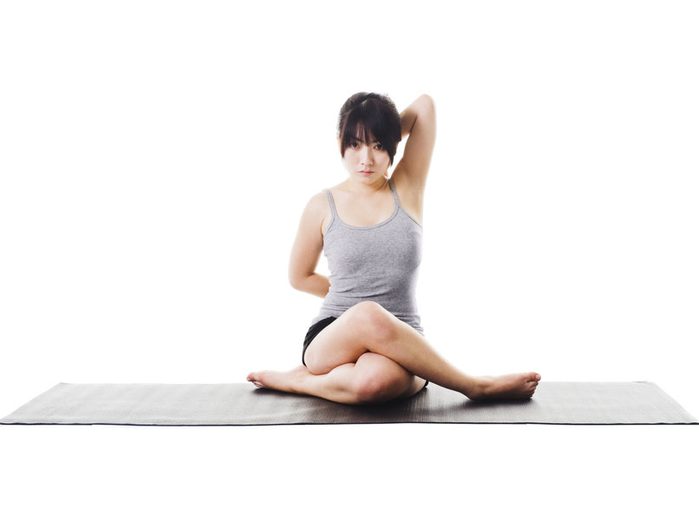
Modified Cow’s Face Pose
Not to be confused with cow’s pose, in this pose, knees are stacked on top of one another and hands are clasped behind your back – which means you’ll get a great deep hip stretch.
“The modified cow’s face pose is a great passive stretch to the external hip rotators,” says Visram. If you find this stretch too deep, you can always modify to make it a little easier. “The modified pose has one leg outstretched rather than crossed over.”
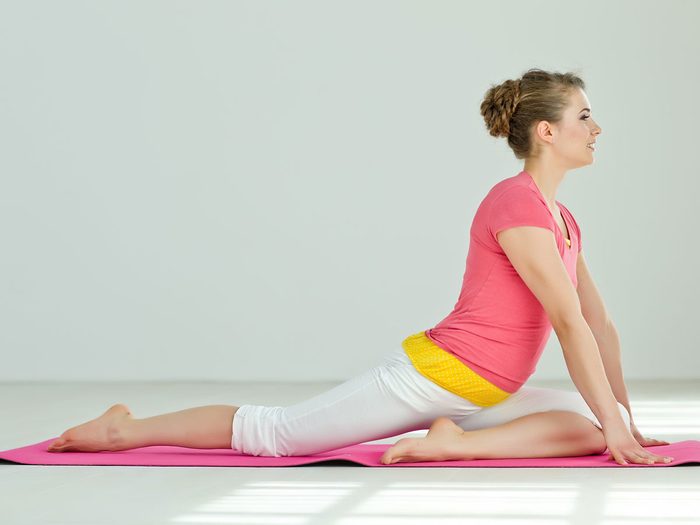
Pigeon Pose
While this pose is guaranteed to give you a deep stretch (Visram says it’s the most effective piriformis and gluteus stretch) take it easy the first few times you try it. Going too deep will do more harm than good. “Its important in this pose to stretch within your comfort level,” says Visram.
You’ll know your form is correct if your “hips are level to the floor and square to the front of the mat,” says Visram. When in doubt, “use core strength to keep your torso tall.”
If you find this pose more painful than helpful, don’t force your body into it. Visram suggests trying reclined pigeon pose (laying on your back with your legs in a figure 4 position) to warm up and get your body used to the stretch.
Related:
• The 5 Most Common Yoga Injuries and How to Prevent Them
• How to Choose the Yoga Style Right for You
• How to Start an At-Home Yoga Practice
